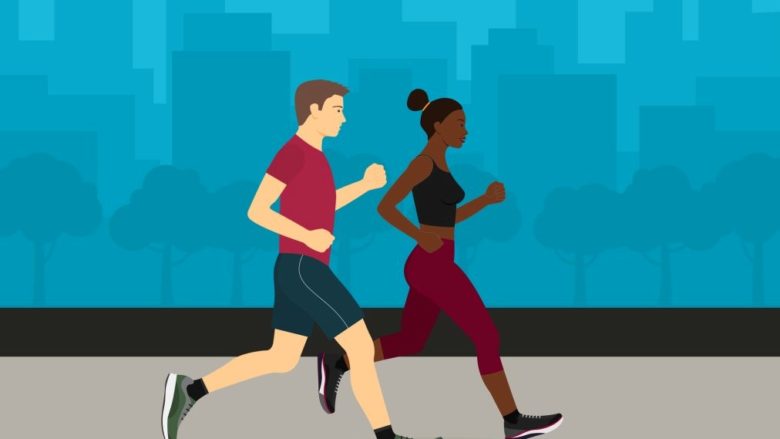The Importance of Exercise for Pain Management
One in five Canadians suffer from chronic pain. When also considering acute injuries, it is likely that most Canadians will experience some sort of pain in their lifetime. Now, more than ever, physicians are recommending that people try non-pharmacological therapies to deal with their chronic pain. In addition to offering hands-on manual therapy options, Registered Massage Therapists can recommend a remedial exercise routine that can help you effectively reduce your pain and get back to doing
the activities you love.
Chronic Pain
Exercise has been shown to help people with chronic pain decrease their pain severity and improve their physical function.
Regular physical exercise also helps people with chronic pain feel a greater overall sense of wellbeing, increases their independence, reduces the amount they need to rely on the health care system, and decreases their absences from work. While physical activity is beneficial, sedentary behaviour can actually make it more likely that someone will experience chronic musculoskeletal pain and can make pain worse.
Incorporating movement into your day, in whatever way you’re most comfortable with, can help you both manage your pain and help prevent further pain from developing.
Acute Pain
After acute musculoskeletal injuries, one big factor that can increase the risk of developing a permanent disability is kinesiophobia, or fear of movement. Continuing to move, within your comfort levels, can help make sure your acute injuries don’t become chronic. Exercise, especially when combined with manual therapy and patient education, is an effective option to help alleviate acute pain and to help prevent acute pain from becoming chronic.
With all types of musculoskeletal pain, and specifically with back pain, exercise can help reduce pain intensity and help people get back to their regular activities more quickly. A specific exercise routine designed by a health professional based on the individual patient, especially when combined with passive therapies, can help people with acute back pain reduce their risk of future disability.
Your RMT Can Help
Massage therapy is more than the hands-on treatment that many people imagine. An important part of a massage therapy treatment is often the RMT recommending remedial exercises based on the patient’s condition and comfort level. Research shows that this targeted exercise is just as important as hands-on manual therapy to help people improve their pain and be able to confidently return to their regular activities. RMTs can also provide reassurance and education to their patients that exercise will not necessarily increase their pain, and is likely to be beneficial. In order for exercise to be beneficial to pain, it is important that the exercise is targeted and you don’t exceed your abilities or comfort level, and this is an area where RMTs can help.
References
Ambrose, K. R., & Golightly, Y. M. (2015). Physical exercise as non-pharmacological treatment of chronic pain: Why and when. Best practice & research. Clinical rheumatology, 29(1), 120–130.
Banerjee S, Argáez C. Multidisciplinary Treatment Programs for Patients with Acute or Subacute Pain: A Review of Clinical Effectiveness, Cost-Effectiveness, and Guidelines. Ottawa (ON): Canadian Agency for Drugs and Technologies in Health; May 7, 2019.
Geneen, L. J., Moore, R. A., Clarke, C., Martin, D., Colvin, L. A., & Smith, B. H. (2017). Physical activity and exercise for chronic pain in adults: an overview of Cochrane Reviews. The Cochrane database of systematic reviews, 1(1), CD011279.
Hanna, F., Daas, R. N., El-Shareif, T. J., Al-Marridi, H. H., Al-Rojoub, Z. M., & Adegboye, O. A. (2019). The Relationship Between Sedentary Behavior, Back Pain, and Psychosocial Correlates Among University Employees. Frontiers in public health, 7, 80. https://doi.org/10.3389/fpubh.2019.00080
Mani, R., Adhia, D. B., Leong, S. L., Vanneste, S., & De Ridder, D. (2019). Sedentary behaviour facilitates conditioned pain modulation in middle-aged and older adults with persistent musculoskeletal pain: a cross-sectional investigation. Pain reports, 4(5), e773.
Schopflocher, D., Taenzer, P., & Jovey, R. (2011). The prevalence of chronic pain in Canada. Pain research & management, 16(6), 445–450.
Taulaniemi, A., Kankaanpää, M., Tokola, K., Parkkari, J., & Suni, J. H. (2019). Neuromuscular exercise reduces low back pain intensity and improves physical functioning in nursing duties among female healthcare workers; secondary analysis of a randomised controlled trial. BMC musculoskeletal disorders, 20(1), 328.


Leave a Comment